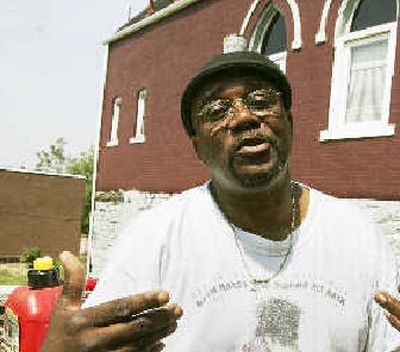Motorists still haven’t gotten their fill of high gas prices

NEW YORK — For all their complaining as they pay $3 a gallon or more to fill up their cars, few American drivers have yet to reach the point of cutting back.
That’s the message from government statistics showing that demand for gasoline is only just starting to level off even as refinery outages and tight supplies have sent pump prices soaring by 43 percent since the end of January.
And brace yourself: experts say with gas already closing in on $4 a gallon in Chicago and San Francisco ahead of the peak summer driving season, higher prices could be in the cards.
“I drive 55 miles each way to work every day,” said Sandy Colden, of Medford, N.J., one recent morning while loading groceries into her Honda Pilot SUV. “So I really don’t have a choice, unfortunately.”
Colden’s not alone. Most Americans are locked into their driving habits, and can do little to alter their fuel-buying patterns when prices rise, experts say. For example, the number of workers with commutes lasting longer than 60 minutes grew by almost 50 percent between 1990 and 2000, according to Census Department data.
But that usually means they have to cut back elsewhere, as Wal-Mart Stores Inc. is finding to its distress. The world’s largest retailer said Tuesday that earnings in the current quarter will fall short of Wall Street expectations, in part because of higher gas prices.
Weekly gasoline demand in April increased as much as 1.9 percent over to the same weeks in 2006 even as the average national price of a gallon of gasoline grew from $2.71 to $2.97 by the end of the month, according to Energy Information Administration data.
Only during the first week of May, when prices jumped to $3.05 a gallon, did demand for gasoline abate slightly — by about two-one hundredths of a percent, EIA figures showed.
Experts disagree over how high prices have to rise before consumers are shocked into driving less — at least temporarily.
“We might actually see some reaction at $3.50 (a gallon)” nationally, said Larry Compeau, executive officer of the Society for Consumer Psychology and professor of marketing and consumer psychology at Clarkson University in Potsdam, N.Y.
Lars Perner, assistant professor of clinical marketing at the University of Southern California’s business school, disagrees, saying the tipping point is more likely $4.
Try telling that to Jennifer Hoover, 32, a graphic designer who lives in the San Francisco area. She said she was startled by her bill — $58.69 to fill up her silver Audi sedan with $4.09 a gallon premium gasoline on Tuesday — but was late for an appointment and had no other choice.
“I was just thinking when I drove up — ‘Why am I stopping here when it’s $4.09?”’ she said. “But it’s on my way and I’m late and I have to do what I have to do.”
William Hill, of Pittsburgh, said he’d consider downsizing from his minivan to a hybrid sedan if hybrids weren’t more expensive.
“They charge you more for a hybrid to compensate for what you would pay for gas,” Hill said while gassing his minivan along the Pennsylvania Turnpike one day last week. “So either way, you lose.”
There was a definite consumer reaction in September 2005 after Hurricane Katrina outages pushed prices above $3 gasoline for the first time. Demand dropped as much as 6.5 percent. “There was … something significant psychologically about the $3 barrier,” said Perner.
Since then, however, consumers seem to have adapted, with demand rising throughout a brief period of prices above $3 a gallon last summer.
“People complain about higher oil prices … but they still drive their cars, they still buy their SUVs, they don’t want to carpool,” said Fadel Gheit, an energy analyst at Oppenheimer & Co.
“It’s a little inconvenient for me to take the bus,” said David Harris, 31, a film school marketing manager in Los Angeles who commutes 40 miles a day for work.
Consumers may suspect that oil refiners are colluding in the recent price spike, but analysts say the real culprit is an unprecedented number of refinery accidents and maintenance outages this spring.
Most prominent of the outages was a February fire that shut down Valero Energy Corp.’s 170,000 barrel-per-day McKee refinery in Sunray, Texas, for months.
As a result, gasoline inventories fell by more than half to 93.5 million barrels in the week ended May 4 from 205.1 million barrels in the same week in 2006 and 214.7 million barrels in 2005, according to government figures.
Charles Drevna, executive vice president of the National Petrochemical and Refiners’ Association, said many refineries shut down for maintenance for the first time since their operations were kicked into overdrive by Hurricane Katrina. When the 2005 storm knocked out gas and oil facilities along the Gulf Coast, refineries in other parts of the country had to step in and pick up the slack, Drevna said. In many cases, that meant putting off regular maintenance for years.
“There’s still a lasting effect from that,” Drevna said.